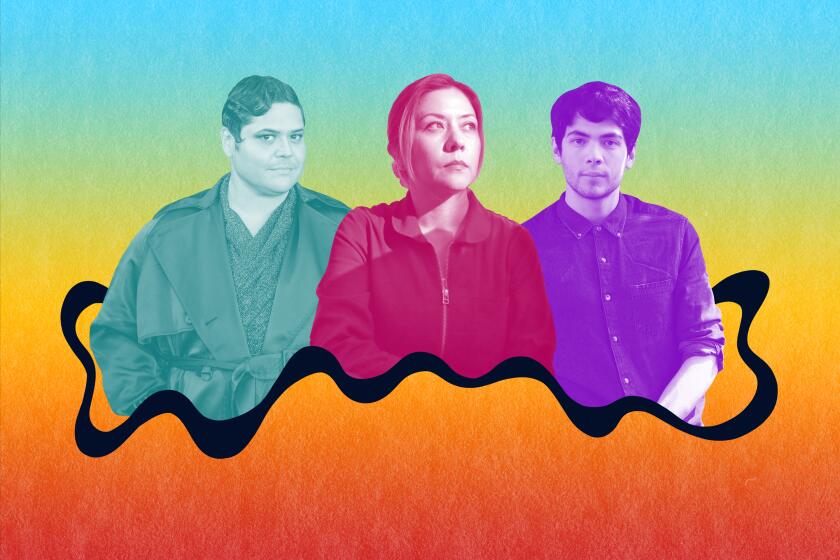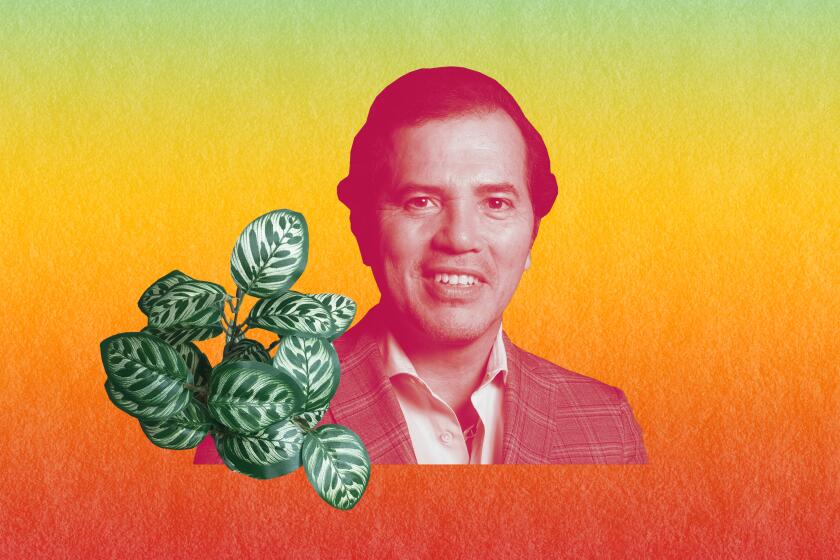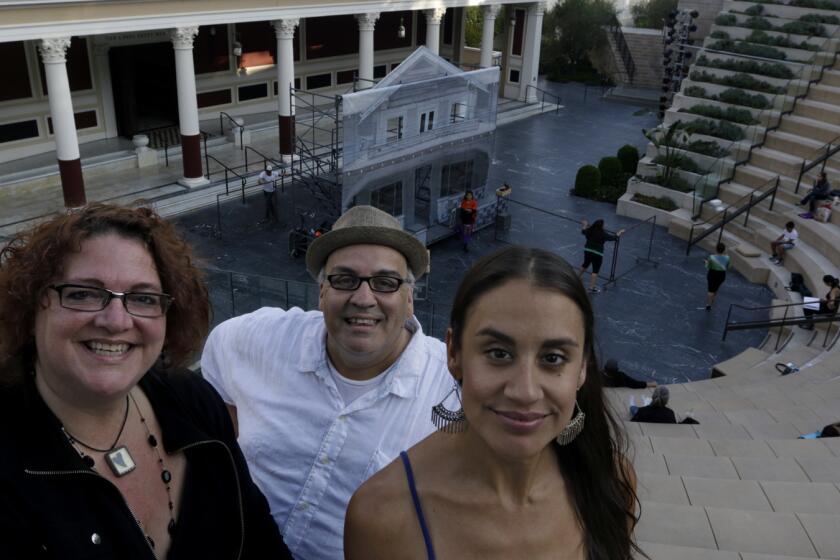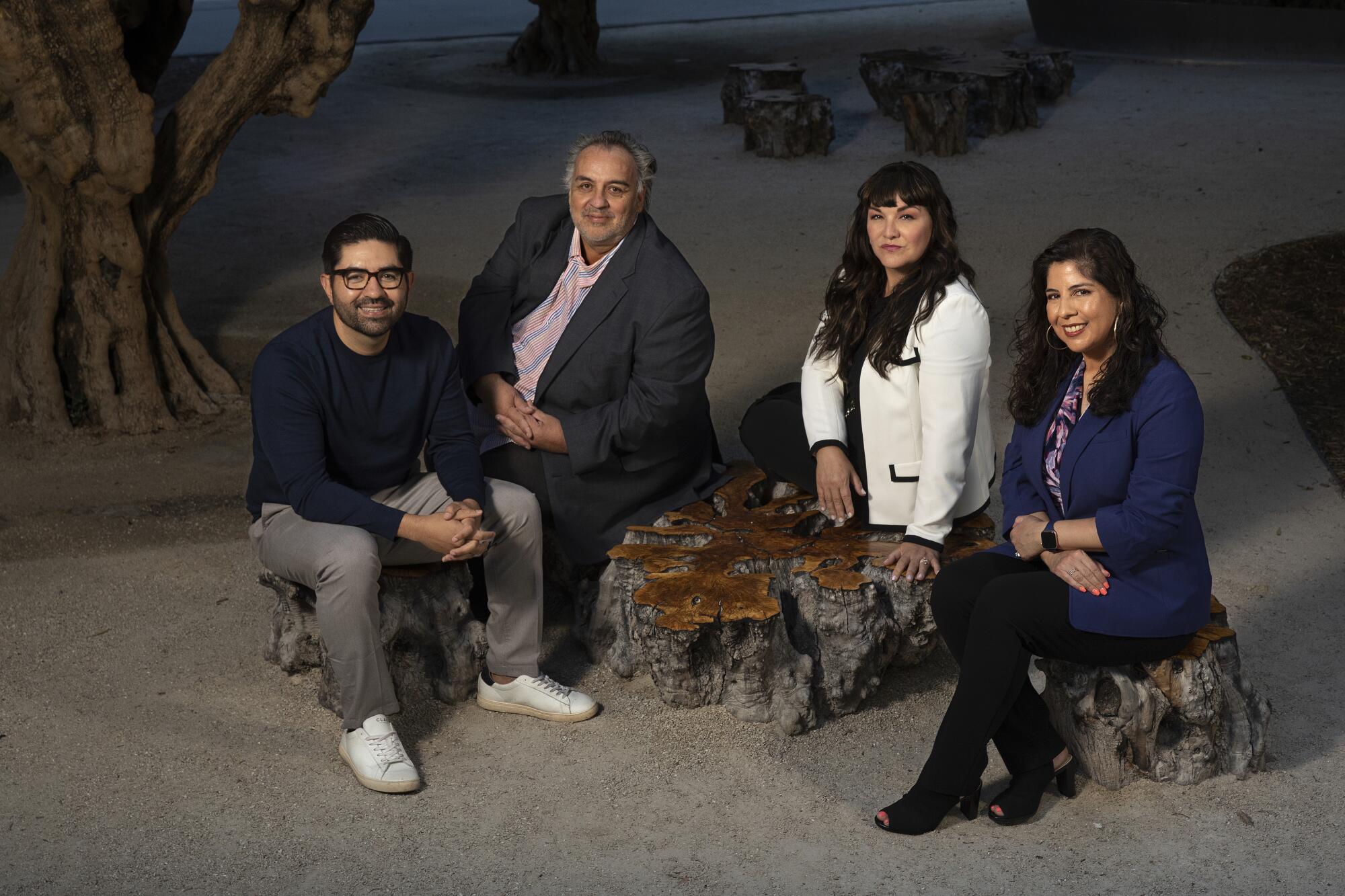
To speak of Latino culture in the United States is often to tell a story of absence, of underrepresentation and misrepresentation, of everything that is missing rather than all that exists. This will not be that story.
In Los Angeles, a half-Latino city in a half-Latino county, a generation of artists and thinkers is working toward a future of not just more representation but a deeper, more nuanced kind.
In this roundtable, The Times gathered three cultural leaders who are establishing new institutions and reimagining old ones. They include playwright Luis Alfaro, who has brought a slate of fresh theatrical offerings to the Center Theatre Group as associate artistic director; Pilar Tompkins Rivas, chief curator of the rising Lucas Museum of Narrative Art, who is helping conceive that institution’s mission from scratch; and Jairo Alvarado, a co-founder of Redefine Entertainment, a new talent management firm that represents a diverse array of Hollywood movers and shakers (such as Angel Manuel Soto, director of the upcoming DC Comics flick “Blue Beetle”). Joining them was scholar Ana-Christina Ramón, who leads UCLA’s Entertainment and Media Research Initiative. (Their most recent study, on representation in TV, was just published last week.)
I joined them downtown on a breezy Monday afternoon for a conversation (which has been condensed and edited) about the progress that has been made and what it means to be a creator at a time when identity — call it Latina, Latino or Latinx — is in a state of flux.
Ana-Christina, what bright spots are you seeing in UCLA’s new representation study?
Ramón: In the past few years, there is an increase in Latinx actors that are getting to be the leads. For example, Diego Luna in “Andor.” He was in the movie [“Rogue One”] first, but to be able to see him once a week, with his Mexican accent, on a series that is not binge-able — you have to wait until the next week. I can’t imagine growing up with my parents with their heavy accents, having the opportunity to see somebody like that in a “Star Wars” franchise.
Alvarado: Yeah, there’s a bigger crop, a wider variety of actors: Jenna Ortega, Anthony Ramos, Isabela Merced, Ariana DeBose, Leslie Grace. There hasn’t been this variety in quite some time. Part of the issue has always been that there’s very few actors or actresses with “perception value.”
Our inaugural LA Vanguardia class is an amazing array of Latino talent shaping the movies, TV, music, fine arts and literary scene of today — and tomorrow.
What is perception value and how is it defined?
Alvarado: Hollywood operates on a simple formula: Historical data plus perception value equals risk profile. That’s how they greenlight, that’s how they determine investment. The problem is that is very limiting. If you haven’t made it before, you have limited data to work from. Perception value is also skewed. If I were to go to any executive and say, “Hey, I have a Robert Pattinson sci-fi thriller on this side and I have an Oscar Isaac or a Michael Peña sci-fi thriller on this other side, what do you perceive as the budget value?” Do you think that answer is going to be the same? Probably not.
Going back to the exciting stuff, what I’ve noticed over the past decade is that there is a new generation of Latino executives that no longer have a crab-like mentality. It’s way more organized. There’s a greater network of people helping each other in terms of job opportunities. I’ve helped younger Latino and Latina executives negotiate salaries. I hadn’t seen that before.
Ramón: [It used to be] that idea that there could be only one — and the feeling of, you are my competition if I see another brown face. I definitely see that sea change with the younger generation.
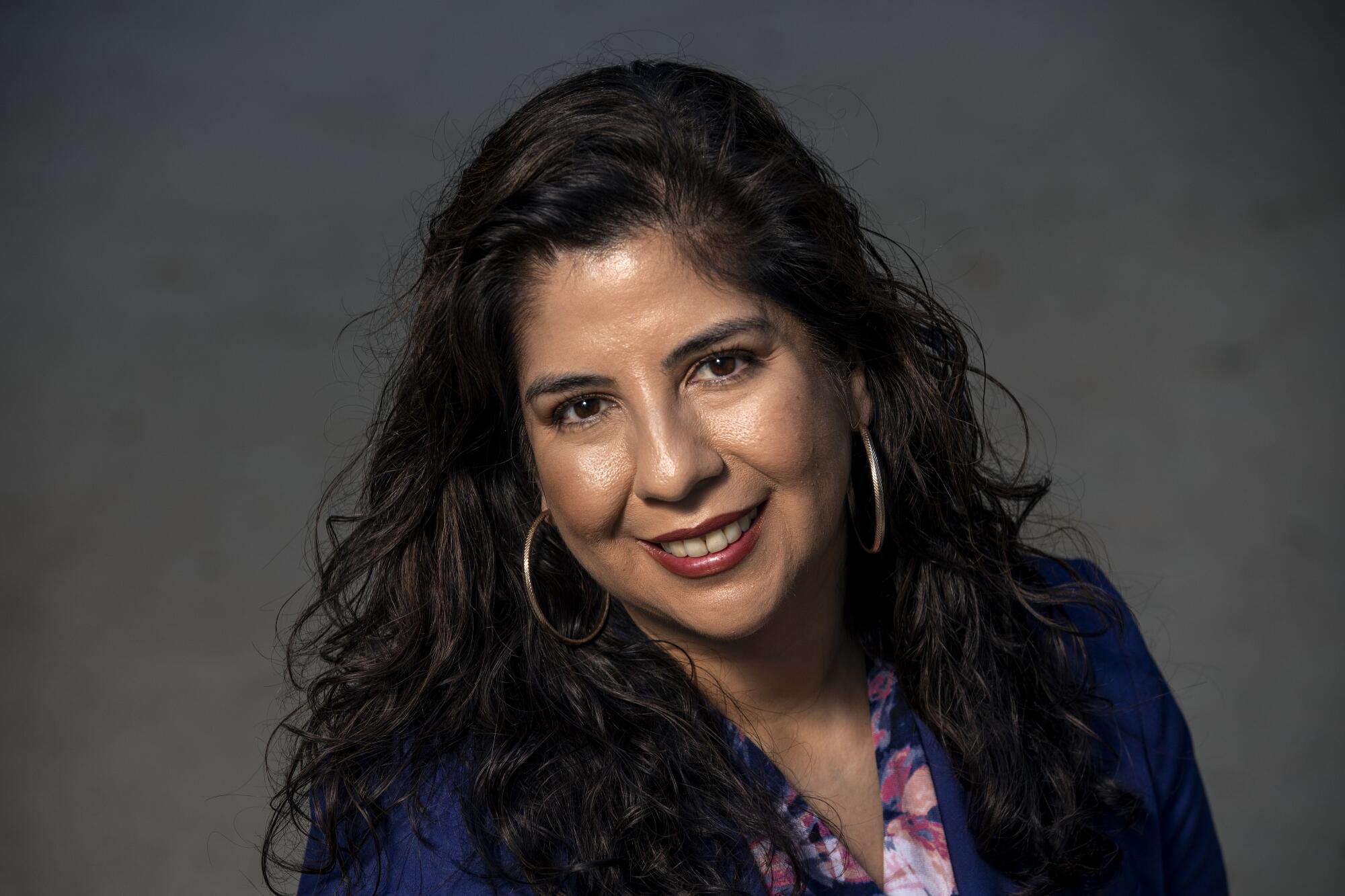
UCLA’s annual Hollywood Diversity Report outlines how pledges to broaden opportunities are falling short — particularly when it comes to budgets.
Alfaro: It’s changing that scarcity mentality. In the theater world, there’s a new generation of artists and they’re taking over spaces that were once very traditional: Stephanie Ybarra [at Baltimore Center Stage], Maria Goyanes [at Washington, D.C.’s Woolly Mammoth Theatre Company], Jacob Padrón [of New Haven’s Long Wharf Theatre]. The challenge is they also inherit debt and they also inherit the audience — for better or worse. And they inherit a sort of mind-set.
We also have an amazing new generation of artists writing work. The muscularity of the work has really, really changed and I would say that it’s changed in Latina writing most of all. Women are doing incredible work. The future is female in the American theater.
I look at the diagram and I’m like, what is the in-between that people aren’t talking about, because that’s where we are as a generation.
— Jairo Alvarado, co-founder, Redefine Entertainment
Tompkins Rivas: There are similarities in the museum field. In terms of leadership, you have Carmen Ramos, who is a newly appointed chief curator for the National Gallery of Art [in Washington, D.C]. She’s the first person of color to ever occupy that role. And then there’s the establishment of the Smithsonian’s National Museum of the American Latino and the appointing of their first director, Jorge Zamanillo. Those are really significant roles at the national level.
There has also been a moment recently of important Chicana artists finally seeing their due. Judy Baca has had an incredible run. There was Yolanda Lopez’s retrospective in [the Museum of Contemporary Art] San Diego and Amalia Mesa-Bains is coming up in the Bay Area [at the Berkeley Art Museum and Pacific Film Archive]. Laura Aguilar’s work, it’s being collected by institutions across the country and even some important collections in Europe — posthumously, of course. But those are critical things making a really big impact.
Alfaro: I love the way you introduced this with the honoring of the veteran artists, which I think is really exciting — that as change happens, veteran artists are being spotlighted.
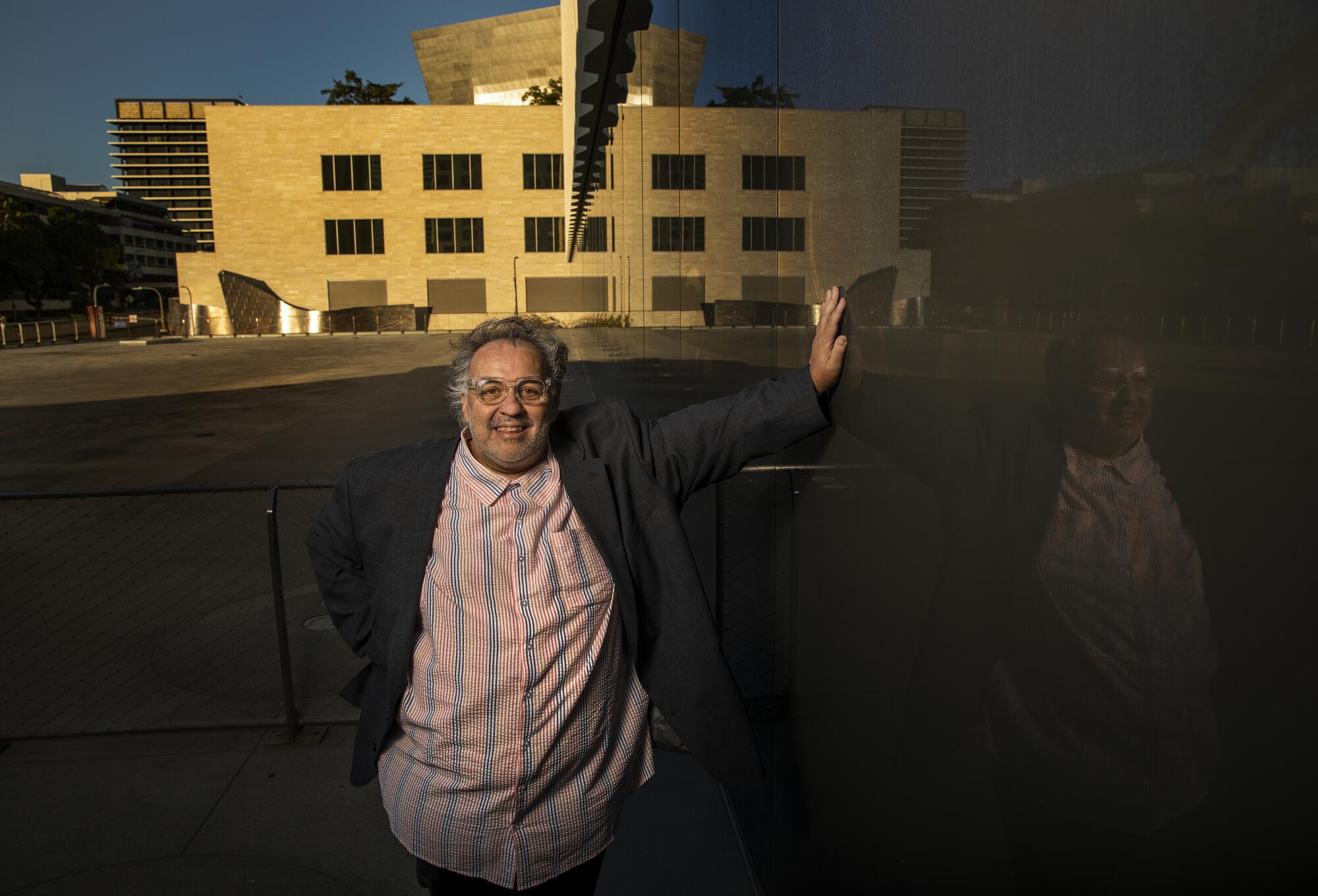
Meet the inaugural LA Vanguardia class, talented Latinos defining the cultural landscape of L.A. and beyond.
There is still work that needs to be done. What do you all see as the pinch points?
Tompkins Rivas: Once you start crunching the numbers, especially in terms of collections, the impact that we’re making right now is still a drop in the bucket compared to how collections have been primarily structured around white male artists. You can’t raise your foot off the gas.
Ramón: A couple of years ago, our report was subtitled “A Tale of Two Hollywoods” because we saw that, in front of the camera, the push for diversity had helped representation in terms of people of color in the main cast. (Not the leads, but the main cast.) But [then] you see that there was hardly any kind of progress in terms of directors and writers and show creators.
I also talk about meaningful representation versus visual representation. You can see a Latinx person on screen, but they may be depicted in a very raceless, very culture-less way. Maybe they have a Spanish surname like Garcia.
I call that the third-firefighter-from-the-left syndrome.
Ramón: Right. It’s: “Garcia, get the hose!”
[Jairo,] you were saying that there are more executives. But there are not enough BIPOC executives in buying power positions. I’ve seen many Latinx executives at the production company level. But in the positions where they can say, “I’m going to make sure this gets on air” — there’s hardly any BIPOC at all.
Alvarado: I read a lot of things about [studios] buying projects that are “Latino.” But that investment in comparison to the investment to actually greenlight something is not even apples to apples — it’s apples to elephants.
Do you mean the investment of optioning a story versus actually producing it?
Alvarado: Correct. Optioning a script is way different from someone saying, “Hey, greenlight 10 episodes for $3 million an episode.” We’re talking about the difference between a couple of hundred thousand to potentially $50 million or $100 million. I’m always asking people, what is the conversion rate in film and television? Unless things are getting made, careers can’t take leaps forward.
We’ve heard so much talk about diversity. And yet, where are the Latinos? Open the talent pipeline — and lift up those who’ve fought their way in.
A lot of [content] is treated very monolithically — old-school Hollywood thinking: Black content over here, Latino content over here and Asian content over here. Hollywood 2.0, as we describe it at Redefine — we talk about intersectionality. A Latino project can be LGBTQ, it can be from a point of view of disability, it can be so many things. I look at the diagram and I’m like, what is the in-between that people aren’t talking about, because that’s where we are as a generation.
Tompkins Rivas: I love this conversation about fluidity. In the art world, the bridge from academia into museums means that art historical categories were brought over into museum culture. Museums traditionally had American art and Latin American art and nothing that allows you to be fluid between those two categories. I feel like the conversations of the past 10 years have been about disarticulating Latino culture from Latin American culture so that it could have its own footing and so it wouldn’t be erased with, “Oh, we already checked that box. We have this artist from Uruguay who once lived in New York.”
So, changing the taxonomy.
Tompkins Rivas: You have to change it, but also move past it. It’s OK to let artists say who they want to be and talk about what they want to talk about.
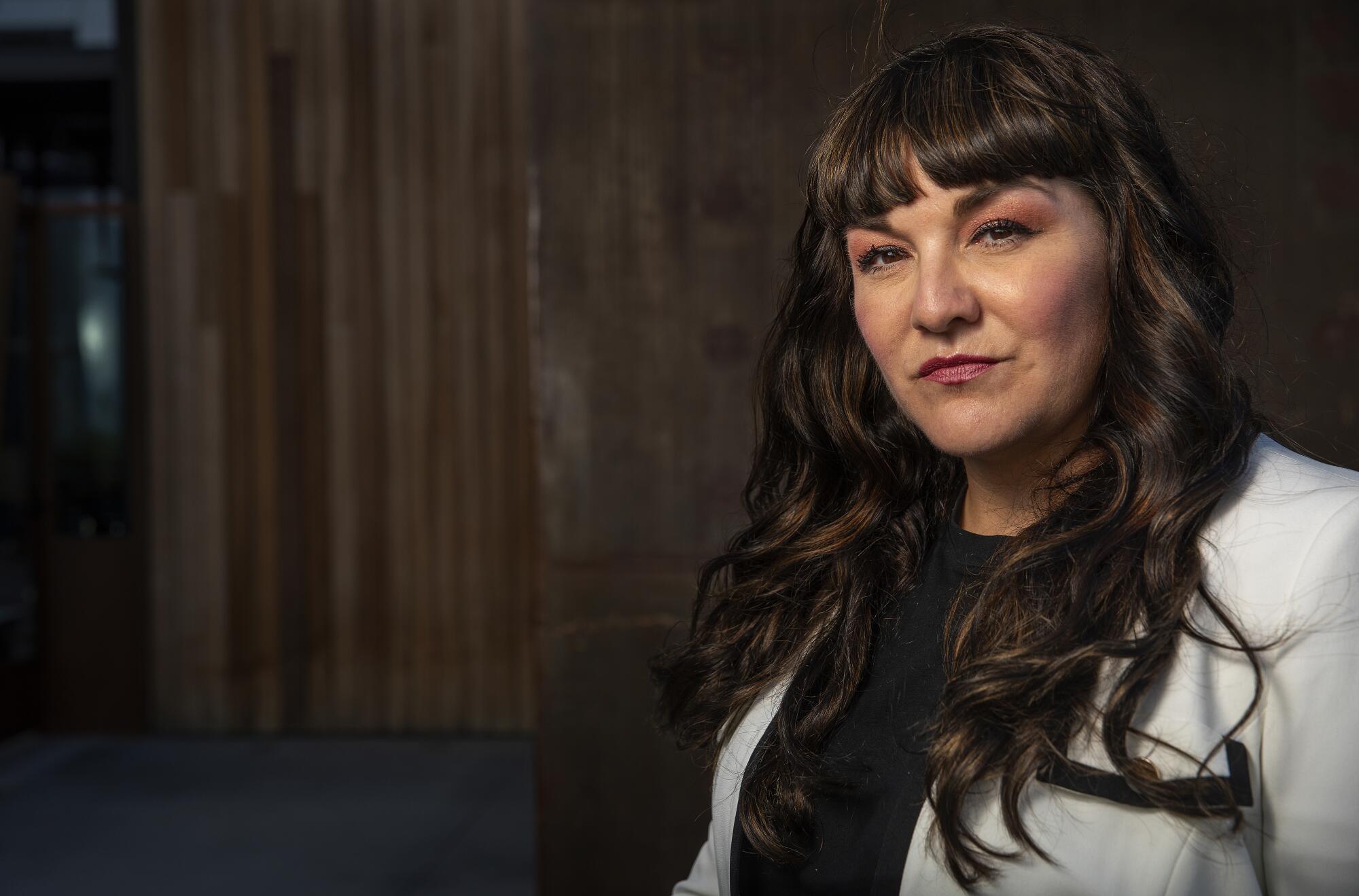
Alfaro: You can lead with your complexity. The way I talk about it in the theater is, what is the authentic American experience. I’m not talking about Latino anymore. The plays that I’m developing right now, one is about schoolteachers and one is about ballet dancers. All Latino plays — but the minute I tag the Latino/Latina/Latinx on it, something shifts in the way people think about its accessibility.
The Geffen [Playhouse] is doing “The Inheritance,” written by Matthew Lopez — not the kind of play you would think would be their “Latino” play. At the [Kirk] Douglas, we’re doing a play by Alexis Scheer, who is colombiana. She’s talking about a very American ritual of high school girls and the sexualization of young women. Telling a story that feels larger and bigger and bolder and not tied to such a small definition — it is for me a bit of a revelation.
Latinidad is up for grabs, with many thinkers rejecting the idea that a single concept can bind all the people of the continent. How do you approach that?
Tompkins Rivas: The national convenings I’ve gone to for the last two decades, everybody starts with this question. We’re all colors. We’re all backgrounds. There are a lot of conversations about degrees of Latinidad — if you’re talking about upper-class Latin Americans living and working in New York versus people who are third generation in south Texas. We all are Latinos in our own ways.
I feel that because of the term Latinx, there is more room for a generative dialogue. It feels more ample, even if many people don’t want to use it to identify with directly. In its inclusiveness to account for gender, it affords a wider spectrum where we don’t seem to feel as pressured to pinpoint Latinidad. Different patterns of migration or colonization brought us here — or U.S. intervention in Latin American countries. It’s a really complex ball of wax. But it makes it so exciting to delve into the individual stories.
Museums traditionally had American art and Latin American art and nothing that allows you to be fluid between those two categories.
— Pilar Tompkins Rivas, curator
Alvarado: I ask executives all the time, when they say, “This is for a Latino audience,” I get very specific and say, “What exactly do you mean by that?” It’s thrown around as all-encompassing. When I was coming up in L.A., there was a generation of older Latinos who believed that to be Latino, you had to speak a certain amount of Spanish or you had to be connected to what they believed the culture was. It’s not so black and white anymore.
Do you have a lot of conversations trying to get casting directors to expand their idea of what Latino might be? That it’s not just the honey-colored mestiza?
Alvarado: All the time. It’s, how can you embrace the kaleidoscope of Latinidad? On the literary side of things, we have to create those stories, we have to be intentional about it. They’re out there, you just haven’t seen it yet because the system hasn’t allowed it. But I’m having those discussions more frequently. And those discussions are coming from newer generations of Latinos.
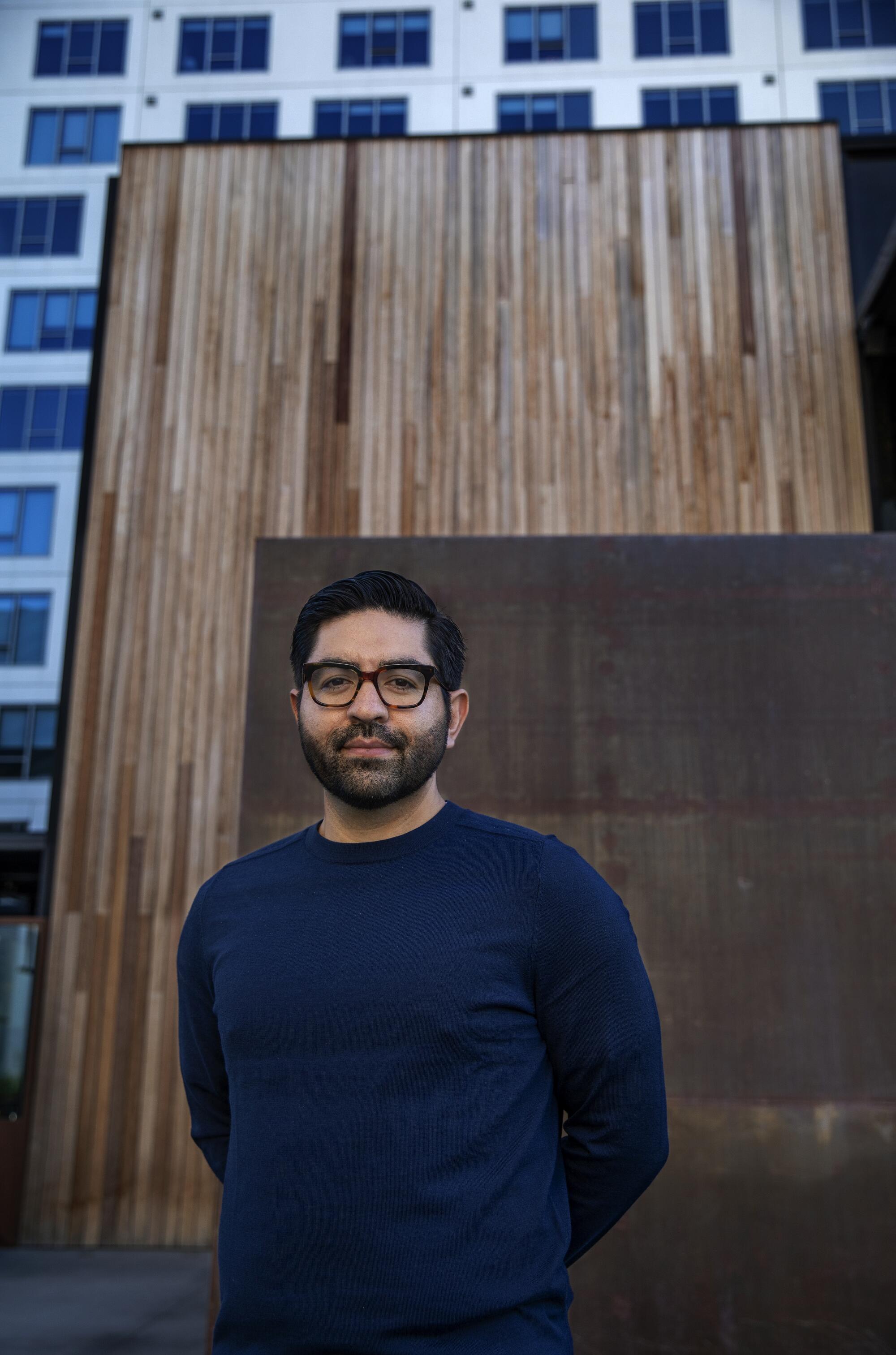
Ramón: Historically, this pan-ethnic term is relatively new. It was first mentioned in the 1850s to describe Latinoamericanos — [Latin Americans] — “Latino” for short. When we do our research, we know that not everyone is the same, but often the easiest way to categorize people is to talk about how they are seen by society. The way we used to categorize for Black Latinx in the past, for example, was in a multiethnic, multiracial category — because of the way Hollywood looked at them. Times are changing and we want to make sure people who are interested in knowing about representation have data specifically available for Black Latinx. Since 2020, we’ve been able to track that in our research.
That’s what I think is very interesting in terms of how Hollywood has portrayed us, creating a very specific way of how we look, who we are. There is no set way for how to even identify.
Alfaro: In theater, we’re kind of up on this — to some degree. I have a play, “Mojada,” that is in its 50th production, and it demands that it be portrayed by an Indigenous person. It’s always amazing to have a casting call and fight for this, from off-Broadway to smaller theaters all over the country. There are so many artists that are already writing into it. The question is: Who is going to produce it? And who is going to produce it on a mainstream level?
It took us almost 60 years to get to a Native American play on the Music Center stage: Larissa FastHorse [whose play, “Fake It Until You Make It” will appear at the Mark Taper in 2023]. And once again, we come back to this notion of leadership. The most controversial thing I’ve said is the simplest thing, both within my company and my field: Power not shared is power corrupted.
Reclining high in the Getty Villa’s outdoor theater, waiting for the actors below to begin rehearsing his latest drama, Luis Alfaro looked nothing like an artist wrestling with tragic mysteries.
Alvarado: I leave it on a hopeful note. Ryan Coogler, who had a massive success with “Black Panther,” here he comes with “Wakanda Forever,” and who does he include in that? Tenoch Huerta and all of these Indigenous actors and Indigenous-looking actors, all these Latinos. Talk about waves — flexing power and sharing of power within Hollywood. Ryan Coogler can write his own destiny; for him to have taken that franchise and shape it the way that he did? I’ve never seen something like that. It’s this new generation of Hollywood saying, “We’re going to lift others with us.” It’s a symbol — the train’s coming, whether you like it or not.
More to Read
The biggest entertainment stories
Get our big stories about Hollywood, film, television, music, arts, culture and more right in your inbox as soon as they publish.
You may occasionally receive promotional content from the Los Angeles Times.


